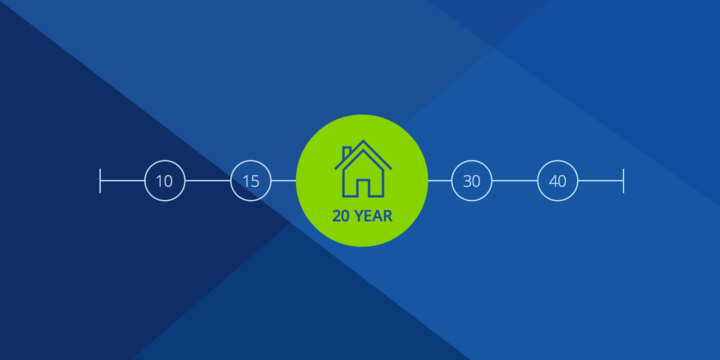What Is a Mortgage Note?


Written by Alycia Lucio on July 29, 2024
A mortgage note is a type of promissory note, which is a legal document outlining the terms and conditions upon which a lender will lend money to a homebuyer in exchange for a promise to repay the loan. It provides details about the home loan, including interest, monthly payments, and penalties for late payments. It also establishes the property as collateral for the loan if the borrower defaults. You’ll sign the mortgage note, along with several other documents, on your closing day.
The difference between a mortgage and a note
A promissory or mortgage note is a legal document between a borrower and a lender representing the borrower’s promise to repay the loan. It describes the loan terms, interest rates, and repayment schedule so the borrower understands their financial obligation to the lender.
A mortgage is also a contract between a lender and a homebuyer that outlines rights and obligations of the lender and homebuyer, but rather than a promise to repay the loan, the mortgage pledges the property as collateral for the loan. This creates a secured interest, or lien, for the lender, giving them the right to foreclose on the home if the borrower defaults.
Together, the promissory note and mortgage create a legally binding financial agreement that ensures the lender can hold the borrower personally liable if the borrower defaults on their mortgage and the lender needs to take back the property.
What’s included in a mortgage note?
Mortgage notes will vary by lender, but they all typically include the following information:
- The total amount borrowed
- The interest rate (if it’s an adjustable-rate mortgage, the note will explain how and when the interest will be adjusted)
- The down payment amount
- The name and contact information of the borrower and lender
- The repayment schedule and required monthly payment amount
- The payment due date
- Prepayment penalties (if any)
- Penalties for late or missed payments
- Any collateral put up for the loan
- Other conditions or clauses, such as details about primary residence occupancy
When you receive a mortgage note, read through the mortgage note carefully before signing to verify that the information is accurate. If anything is incorrect or doesn’t align with the initial agreed-upon terms, contact the lender immediately.
How do I obtain a copy of my mortgage note?
You can contact your mortgage lender or servicer for a copy if you lose your copy of the mortgage note. Some lenders may also charge a processing fee and require a written request for a copy of the new mortgage note. Overall, the process is relatively quick.
What happens if my mortgage is sold?
While a mortgage, which includes the mortgage note, may be sold several times, the loan terms and monthly payments remain unaffected. The borrower must still repay their mortgage loan according to the contract’s terms. The only difference is that the payments will go to the new lender or loan servicer who purchased the mortgage note.
What happens to the mortgage if you default?
If you default on your mortgage, the lender can start foreclosure proceedings after the required loss mitigation options have been satisfied. Lenders may provide a grace period or other loss mitigation options, when available, for borrowers to catch up on their late mortgage payments without penalty, or based on a specific loss mitigation plan. After loss mitigation alternatives have been exhausted, lenders will typically issue a notice of default and begin foreclosure proceedings after four consecutive missed mortgage payments (or 120 days).
What happens to the mortgage if you pay it in full?
The mortgage is considered satisfied once the loan is repaid in full, whether early or according to the loan term. This means you officially own the property and will receive the original mortgage note with a statement declaring your ownership.
If you refinance the mortgage, the new mortgage pays off the original mortgage and lender. In this case, the refinancing lender creates and holds a new note, which works the same way as your original mortgage note.
Can I sell my mortgage note?
You may be able to assign the mortgage to a family member, or another individual if your mortgage allows it; upon which, the individual who assumes the mortgage is financially responsible for repaying the rest of the loan as the original borrower.
Mortgages and mortgage promissory notes are critical legal documents. They represent your promise, as the borrower, to follow through with the loan terms and outline important information about the loan, as well as a collateral pledge of the property securing the mortgage. Once you sign the mortgage and promissory at closing, your new home becomes the lender’s collateral for the loan and your personal responsibility to repay it.
Ready to begin your home-buying journey? See what you pre-qualify for with us at Zillow Home Loans.*
*An equal housing lender. NMLS #10287
Tags
How much home can you afford?
At Zillow Home Loans, we can pre-qualify you in as little as 5 minutes, with no impact to your credit score.
Zillow Home Loans, NMLS # 10287. Equal Housing Lender
Get pre-qualifiedHow much home can you afford?
See what's in reach with low down payment options, no hidden fees and step-by-step guidance from us at
Zillow Home Loans.
Zillow Home Loans, NMLS # 10287. Equal Housing Lender
Calculate your BuyAbility℠



